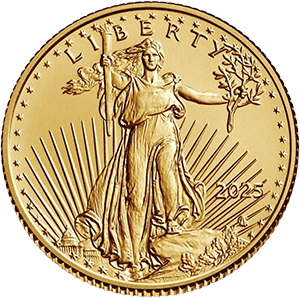
Gold has always held a unique allure for investors and has been considered a safe haven in times of economic uncertainty. As the value of traditional currencies fluctuates, many individuals turn to gold as a means of preserving and growing their wealth. However, gold prices are not solely influenced by market demand and supply dynamics. In this blog post, we will explore how the decisions made by the federal government can significantly impact gold prices and consequently affect investors worldwide.
Monetary Policy and Interest Rates
One of the primary ways the federal government influences gold prices is through its monetary policy decisions, particularly changes in interest rates. When interest rates are low, the opportunity cost of holding gold diminishes, making it a more attractive investment option. Conversely, when interest rates rise, investors may choose to shift their investments to other assets that generate higher yields, reducing demand for gold and potentially leading to a decline in its price.
Fiscal Policy and Government Spending
The federal government's fiscal policies, including spending decisions and taxation policies, also play a crucial role in shaping gold prices. During periods of economic uncertainty or recession, governments often implement expansionary fiscal policies, such as increased government spending and tax cuts, to stimulate the economy. These measures can lead to a rise in inflationary pressures, which typically boosts the demand for gold as a hedge against inflation. Consequently, higher government spending and loose fiscal policies may contribute to upward pressure on gold prices.
Political Uncertainty and Geopolitical Tensions
Political uncertainty and geopolitical tensions are other factors that can influence gold prices. When there is instability in the political landscape or heightened geopolitical tensions, investors tend to seek the relative safety of gold. This flight to safety increases the demand for gold and drives up its price. Government decisions, such as changes in foreign policy, trade tariffs, or geopolitical conflicts, can significantly impact global economic stability and investor sentiment, subsequently affecting gold prices.
Currency Fluctuations
The value of gold is typically denominated in a specific currency, most commonly the US dollar. Therefore, fluctuations in the exchange rate between currencies can have a substantial impact on gold prices. Government decisions related to currency manipulation, central bank interventions, or changes in monetary policy can influence currency exchange rates. A weaker domestic currency can make gold more expensive for investors in that particular country, potentially leading to a decrease in demand and a subsequent decline in gold prices.
Quantitative Easing and Inflation Expectations
In response to economic crises or recessions, governments may resort to quantitative easing (QE) programs. Through QE, central banks inject liquidity into the economy by purchasing government bonds or other financial assets. This influx of money can lead to concerns about inflation, as the increased money supply may erode the purchasing power of traditional currencies. In such scenarios, investors often turn to gold as a store of value, driving up its demand and prices.
Conclusion
While gold prices are influenced by various factors, the decisions made by the federal government can have a significant impact on the market. Monetary policy, fiscal policy, political uncertainty, currency fluctuations, and inflation expectations all play a role in shaping the demand and supply dynamics of gold. As investors navigate the ever-changing economic landscape, understanding the relationship between government decisions and gold prices can provide valuable insights for making informed investment decisions.









